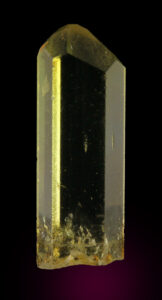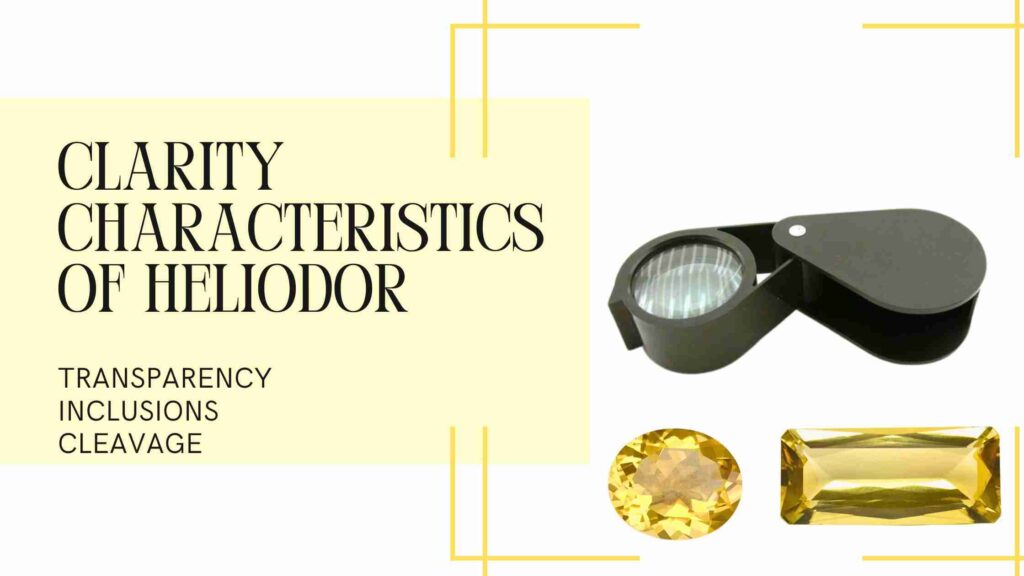Introduction:
Heliodor, a mesmerizing gemstone hailing from the beryl family, has etched its place in the hearts of gem enthusiasts, owing to its radiant yellow hues. Commonly known as yellow beryl, heliodor not only dazzles with its vivid color but also intrigues with its clarity characteristics.
In this in-depth exploration, we will unravel the secrets of heliodor, delving into its origin, properties, and meticulously examining the intricate clarity features that make it a truly unique and coveted gemstone.
Origin and Formation:
Derived from the Greek words “Helios” (meaning sun) and “dōron” (meaning gift), heliodor’s nomenclature underscores its sunlit brilliance. A member of the beryl family, heliodor shares its mineral composition with esteemed gems like emerald and aquamarine.
Typically forming in granite pegmatites, the gem emerges as beryllium-rich fluids interact with various minerals during the crystallization process. The presence of trace amounts of iron in its crystal lattice imparts the gem’s distinctive yellow color. Noteworthy deposits are found in Brazil, Madagascar, Ukraine, and Namibia.
Clarity Characteristics of Heliodor: A Detailed Exploration
-
Transparency:
Heliodor stands as a gemstone paragon when it comes to transparency. The exceptional level of transparency exhibited by heliodor is a defining characteristic that sets it apart in the world of gemstones.
This transparency allows light to gracefully traverse through the gem, acting as a canvas upon which brilliance is accentuated, and inherent beauty is magnified.
Gem enthusiasts and skilled artisans particularly favor heliodor for its remarkable transparency, as it positions the gem as an ideal candidate for faceted cuts. This unique feature enables artisans to unlock the gem’s full light-reflecting potential, resulting in a finished product that radiates luminosity and elegance.

-
Inclusions:
While heliodor generally boasts transparency, it shares a common trait with many natural gemstones— the potential for inclusions. These internal features, which range from minerals to gas bubbles, are formed during the gem’s crystallization process.
Inclusions in heliodor are like nature’s signature, akin to a unique fingerprint that adds character and authenticity to each individual gem. Gemstone connoisseurs often find themselves drawn to these distinctive inclusions, as they create mesmerizing patterns within the stone, further enhancing the gem’s allure.
The presence of inclusions not only contributes to the gem’s unique identity but also serves as a testament to its natural formation processes.

-
Cleavage:
Heliodor, a close relative to other beryl varieties, exhibits good cleavage, a property defined by the crystal’s tendency to break along specific planes due to its atomic structure.
While cleavage may render a gem more susceptible to damage, skilled gem cutters turn this characteristic into an advantage. By strategically leveraging the cleavage property, artisans can create well-proportioned and stunning facets that add a touch of artistry to each heliodor gem.
This delicate balance between showcasing the gem’s inherent cleavage and preserving its structural integrity requires precision and expertise. The result is a gem that not only dazzles with its colour and transparency but also boasts an exquisite craftsmanship that enhances its overall aesthetic appeal.
In essence, heliodor’s clarity characteristics, encompassing exceptional transparency, unique inclusions, and advantageous cleavage, contribute to the gem’s undeniable charm and desirability. Understanding the intricacies of these features provides a profound appreciation for the natural processes and artisanal skills that come together to create these stunning gems, making heliodor a truly captivating choice for gemstone enthusiasts and collectors alike.

